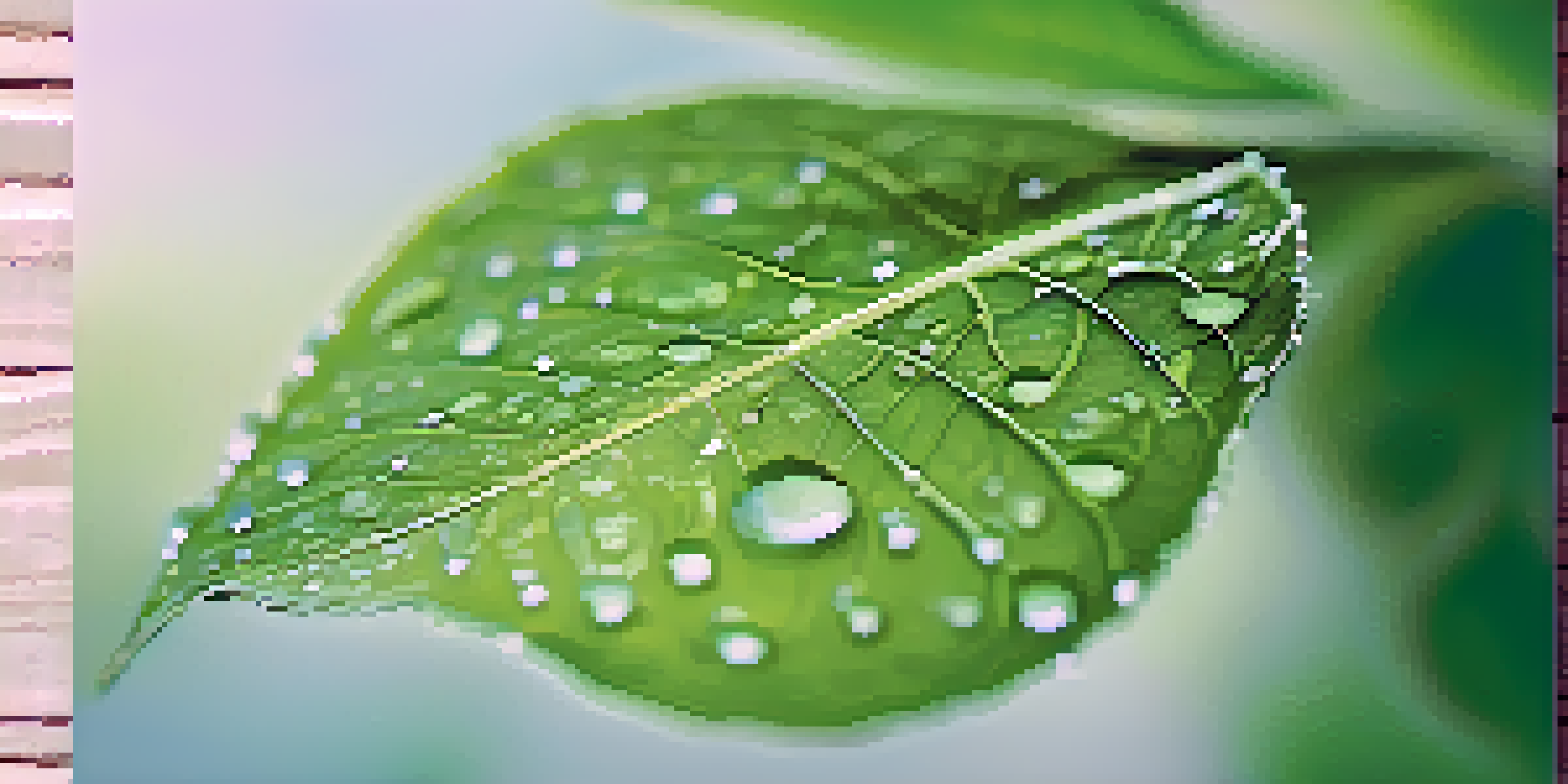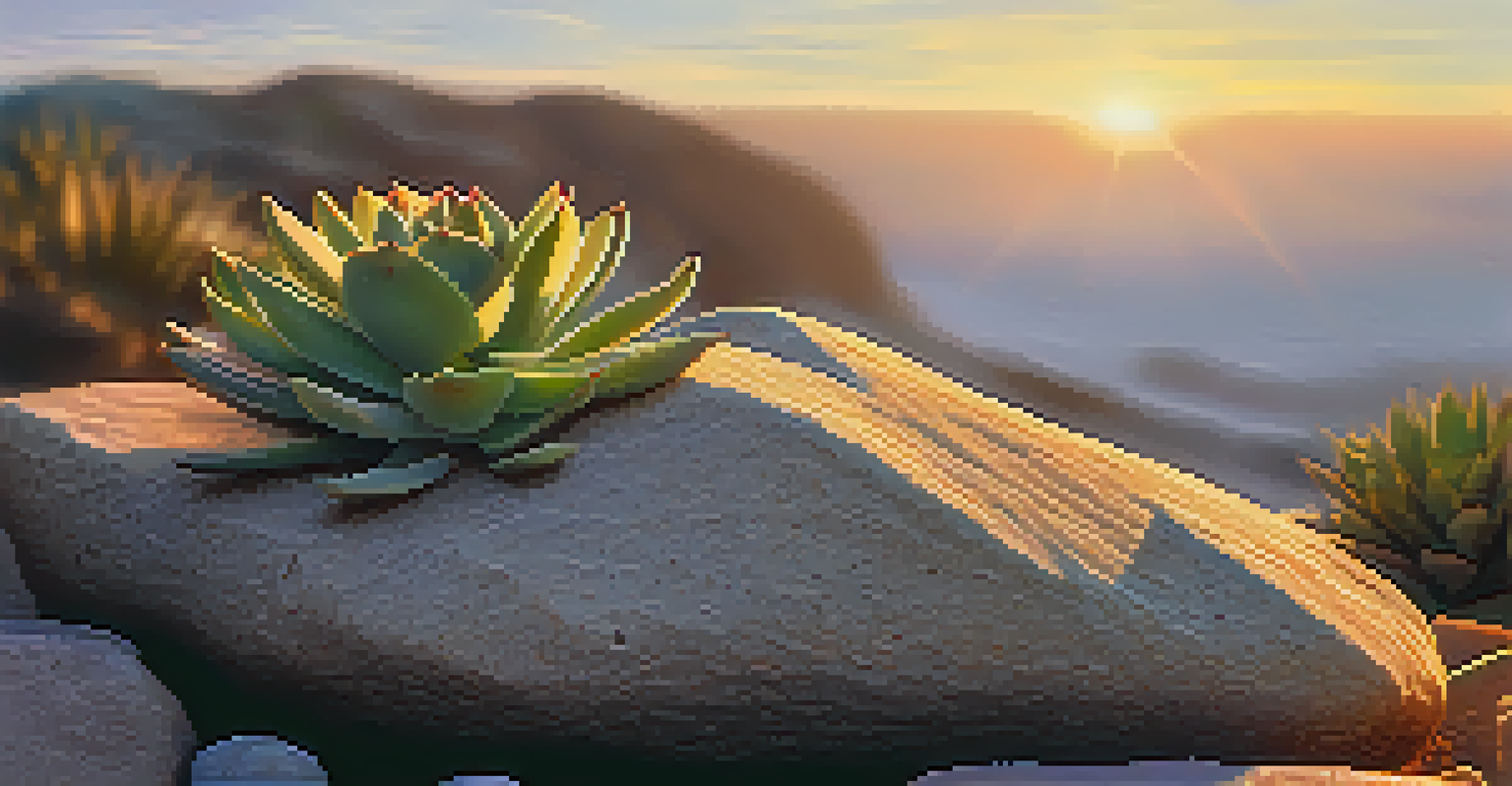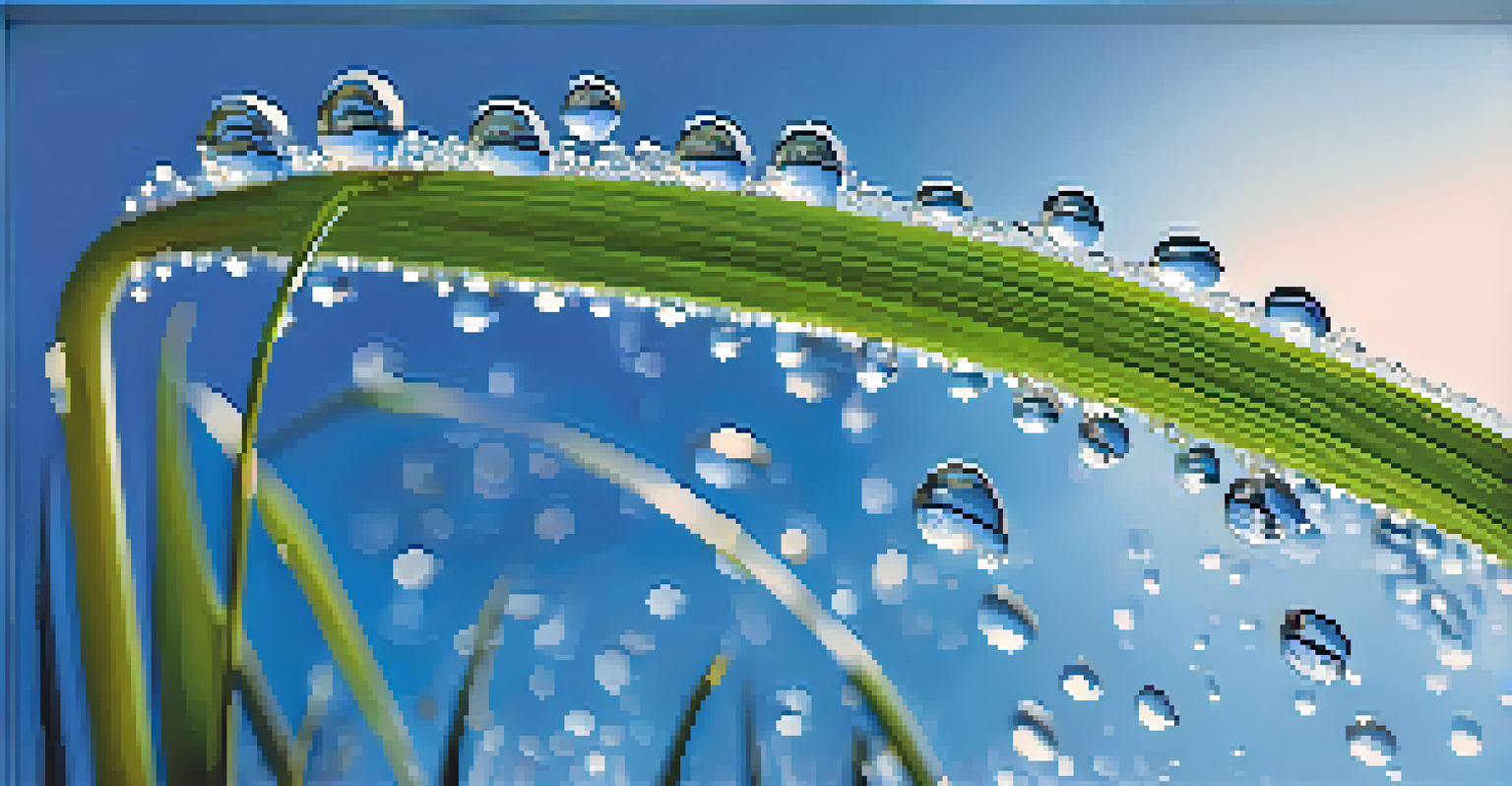Creating Textures in Plant Photography: Tips and Techniques

Understanding the Importance of Texture in Plant Photography
Texture can transform a simple plant photograph into a captivating piece of art. It adds depth and interest, drawing the viewer’s eye to the intricate details of the subject. For instance, the roughness of a cactus juxtaposed against the smoothness of a leaf can create a striking visual contrast.
The camera is an instrument that teaches people how to see without a camera.
When you focus on texture, you invite your audience to experience a tactile quality of the plants, even through a two-dimensional image. This sensory engagement can evoke emotions and memories, making your photographs more relatable and impactful. Think about how a close-up of dew on a petal can make someone feel refreshed and connected to nature.
Ultimately, understanding and capturing texture can elevate your plant photography skills, allowing you to tell a story that goes beyond mere representation. It encourages exploration and observation, pushing you to notice the beauty in the details that often go unnoticed.
Choosing the Right Time and Lighting for Texture
Lighting plays a crucial role in showcasing textures, and the golden hours—shortly after sunrise or before sunset—are often the best times for plant photography. During these times, the light is softer and warmer, enhancing the details without creating harsh shadows. This can make the textures of leaves and petals appear more vibrant and inviting.

Overcast days can also be beneficial, as the diffused light minimizes glare and highlights subtle textures. Consider how the even, soft glow of a cloudy day can reveal the delicate patterns on a fern or the intricate veins of a flower petal without overpowering them.
Texture Transforms Plant Photos
Capturing texture in plant photography adds depth and emotional resonance, inviting viewers to appreciate intricate details.
Experimenting with different times of day and lighting conditions can significantly impact your results. Pay attention to how the changing light affects the textures of the plants, and don’t hesitate to shoot at various times to find what works best for your subject.
Angles and Perspectives that Enhance Texture
The angle from which you photograph a plant can dramatically alter the perception of its texture. Shooting from a low angle can amplify the details and create a sense of grandeur, making even small plants appear monumental. For example, photographing a blade of grass from below can highlight its intricate structure against the sky.
Photography is the story I fail to put into words.
Similarly, experimenting with close-ups can reveal textures that are often overlooked. A close-up of a succulent’s leaves can showcase the unique patterns and colors that contribute to its charm. This intimate perspective invites viewers to appreciate the beauty in the small details.
Don’t be afraid to change your position and try unconventional angles. Sometimes, the most unexpected perspectives can lead to stunning results that highlight the textures in new, exciting ways.
Using Depth of Field to Emphasize Texture
Depth of field refers to the amount of your image that appears in focus; manipulating it can significantly enhance the texture in your photography. A shallow depth of field can isolate your subject, allowing its textures to stand out against a beautifully blurred background. This technique can make the intricate details of a flower or leaf pop, drawing the viewer’s attention.
Alternatively, using a deeper depth of field can capture the textures of multiple elements in a scene, creating a rich tapestry of detail. Imagine photographing a garden where both the foreground flowers and the background foliage are in focus, allowing viewers to appreciate the interplay of textures in the entire composition.
Lighting Enhances Textural Details
The right lighting, especially during golden hours or on overcast days, can significantly showcase and enhance the textures of plants.
Experimenting with different apertures will help you understand how depth of field affects texture. Play around with your camera settings to find the sweet spot that best showcases the textures you wish to highlight.
Texturing Techniques: The Role of Post-Processing
Post-processing can greatly enhance the textures captured in your plant photography. Software like Adobe Lightroom or Photoshop allows you to adjust clarity, contrast, and sharpness to bring out the finer details. For instance, increasing the clarity can help accentuate the texture of a leaf or bark, making it more visually striking.
Be careful, however, not to overdo it; the goal is to enhance the natural beauty rather than create an artificial look. Subtle adjustments often yield the best results, allowing the textures to shine through while maintaining a natural feel. Consider how a slight increase in contrast can make the ridges of a petal pop without losing its softness.
Don’t shy away from experimenting with different filters and effects, but ensure that these enhancements align with the mood and story you wish to convey in your photography. Post-processing is a powerful tool that, when used judiciously, can elevate your plant photography to new heights.
Incorporating Natural Elements for Added Texture
Incorporating natural elements like stones, soil, or water can add layers of texture to your plant photographs. These elements can provide context and contrast, enriching the overall composition. For example, placing a succulent on a textured rock can enhance the visual interest by juxtaposing the smoothness of the plant with the ruggedness of the stone.
Additionally, using complementary natural elements can create a sense of harmony within the image. Consider how a vibrant green leaf against a backdrop of rich, dark soil can create a striking contrast that emphasizes both the plant and its environment.
Patience Reveals Unique Textures
Practicing patience and keen observation allows photographers to discover and capture the unique textures of plants in their natural settings.
When arranging your composition, think about how these elements interact with each other. The goal is to create a cohesive image where all textures work together to tell a story about the plant and its surroundings.
Practicing Patience and Observation in Plant Photography
Patience is crucial in plant photography, especially when it comes to capturing textures. Taking the time to observe your subject allows you to notice details that you might otherwise overlook. Spend time with your plants, watching how they interact with light and wind, and you’ll discover unique textures that tell a story.
Sometimes, waiting for the right moment, such as a gentle breeze that reveals a plant's movement, can lead to stunning results. This patience can also apply to the weather; waiting for the perfect light or raindrops on leaves can create incredible opportunities to capture textures.

Ultimately, cultivating patience and observation will not only improve your photography skills but also deepen your connection with nature. It’s about appreciating the beauty in the details and allowing those textures to shine through in your work.